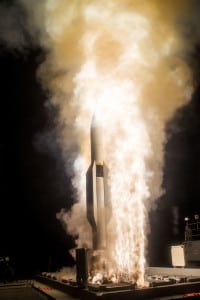
The Missile Defense Agency (MDA) said its new Sea Based Terminal (SBT) system achieved its second ballistic missile intercept during a Dec. 14 test over the Pacific Ocean.During the test, the USS John Paul Jones (DDG-53), a Navy Arleigh Burke-class destroyer equipped with the Lockheed Martin [LMT] Aegis combat system, fired a salvo of two Raytheon [RTN] Standard Missile-6 (SM-6) interceptors in immediate succession against a medium-range ballistic missile target launched from the Pacific Missile Range Facility on Kauai, Hawaii.…

 By
By 











